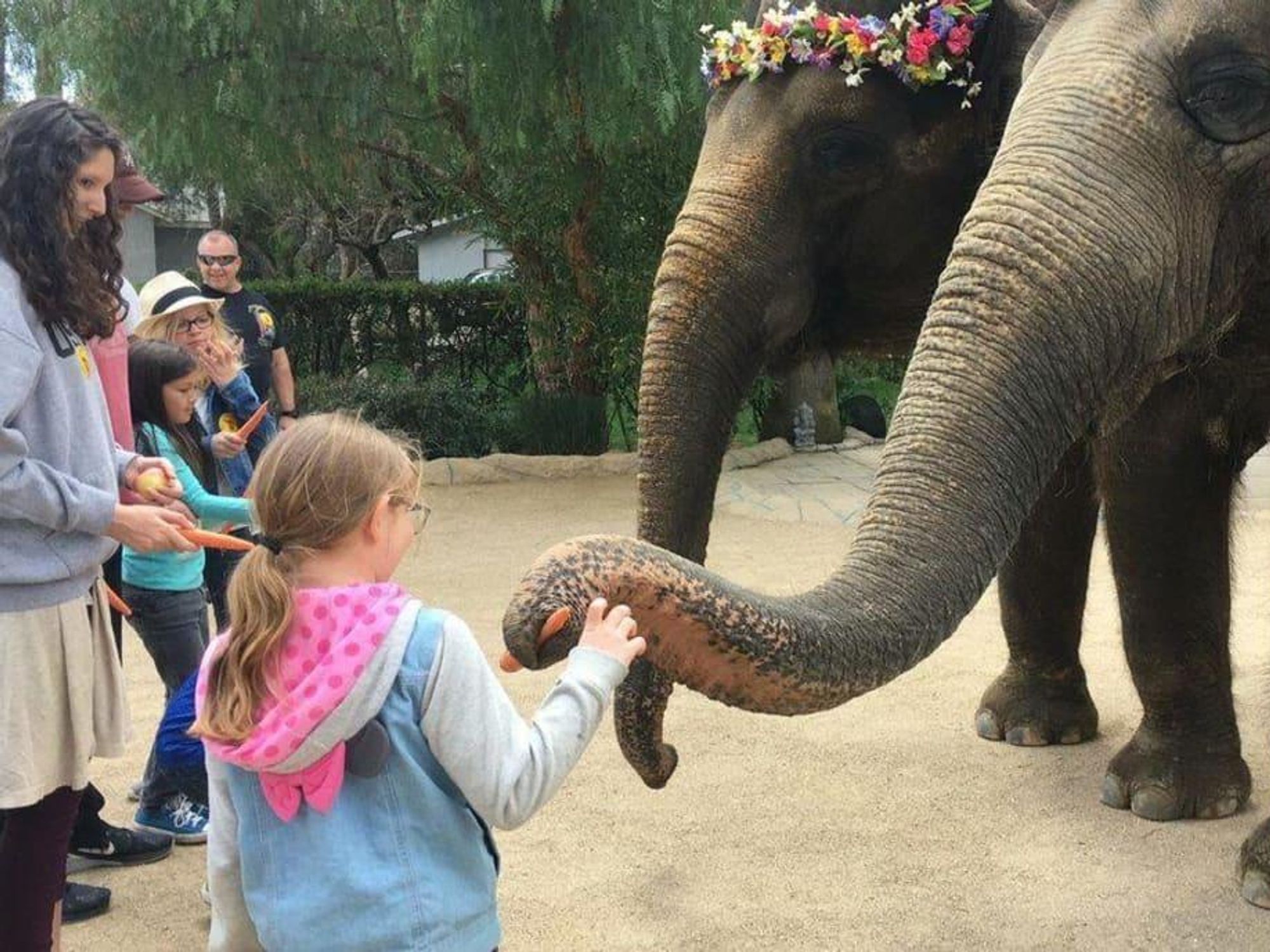Animal News
Elephant that was in film Water For Elephants dies suddenly at Texas facility

An elephant that was used in the making of a high-profile Hollywood film died at an animal facility in Texas — one that's been accused for decades of mistreating its animals.
Tai was a 55-year-old female Asian elephant who became most famous after being used in the 2011 film Water For Elephants.
She was residing at The Elephant Preserve in the Texas Hill Country, which on May 7 sent out an email to its subscribers saying she died "after a brief illness." On the phone, a spokesperson from The Preserve said she died of kidney failure.
Tai is the second elephant to have died at The Preserve in the past year: Dixie, another 55-year-old, died approximately three months ago, also reportedly due to kidney failure.
Tai and Dixie were two of five Asian elephants — along with Kitty, Rosie, and Becky — all captured from the wild, residing at The Preserve, an animal facility operated by a business called Have Trunk Will Travel aka HTWT.
HTWT owners Gary and Kari Johnson were previously located in California, but moved their facility and animals to Texas in 2018, after the Golden State banned the use of bullhooks — metal rods with painful sharp hooks used to train elephants. (Austin has also banned the use of bullhooks.)
HTWT staffers use bullhooks, and has been the target of campaigns by animal groups such as Animal Defenders International, a California group that conducted an 8-week undercover investigation showing trainers, including Kari Johnson, beating and striking elephants with a bullhook, as well as hooking a baby elephant inside the roof of its mouth and using stun guns to shock the elephants.
Escape to Texas
When the Johnsons relocated to Texas, they changed the name to "The Preserve," and claim to be promoting elephant education, knowledge, and conservation.
They charge $125 per person for the opportunity to bathe elephants and snap selfies while the elephants are forced to stand on their hind legs and other unnatural positions, as seen in this video from 2011.
Melinda Pharr, an Austin resident who founded an advocacy and fund-raising group called Elephants Austin, has visited The Preserve a number of times to observe their practices, which are not in line with what true sanctuaries follow.
"They cloak what they're doing in conservation and talk about elephants being endangered, but they engage in practices that are not natural to an elephant's behavior, like painting canvases, standing on their heads, and swaying with a hula hoop," she says. "I saw one of the elephants ordered to pick up a trainer with their trunk. It's little more than a circus side show, and the trainers all have bullhooks in their hands."
Prior to Tai's death, Dixie's condition and sudden disappearance in early 2021 was of sufficient concern to national animal organization PETA that they sent a letter of inquiry regarding her whereabouts. They noted that, in video footage recorded prior to her disappearance, Dixie appeared to be emaciated and lame.
"While you’ve made no announcement, many fear that she may be dead, particularly given her emaciated condition in recent months," their letter said. Dixie has been removed from The Preserve's website.
No oversight
Although The Preserve is featured on the city of Fredericksburg's website (under the Attractions tab), it is actually outside city limits, says city manager Kent Myers.
"We don't inspect the facility or have any direct relationship," Myers says.
The Preserve's only oversight comes from Gillespie County Sheriff Buddy Mills, who has made visits to the facility in response to complaints. Mills did not respond to a request for comment
A statement from the Chamber of Commerce said that "since the elephants have arrived in Gillespie County we have been in communication with the owners of The Preserve, as well as their local veterinarian who has provided regular care to the animals and attests that the animals are well cared for."
What is a sanctuary
There are a few telltale signs you can look for to determine if a facility with animals is a true sanctuary that is not exploiting animals or involved in cruel, inhumane treatment:
- No human interaction. True sanctuaries do not allow interaction or access between visitors and wild animals. No rides, no selfies, no petting, no bathing, no nothing. If the facility shows photos on its website of any proximity between humans and animals, that's a big no.
- No performances or shows. If wild animals are forced to do any kind of routine, it's safe to assume that cruelty was used to persuade them to do so. Even seemingly innocuous activities such as bathing or petting require coercion. Wild animals don't want to be around humans.
- No small cages. The animals have freedom to move at will, in a natural setting, and with other animals of their own kind. But they need to be kept separate behind barriers from people, since people can easily get hurt.
Sanctuaries also do not breed animals, as they do at zoos.
One thing to look for is an accreditation by the Global Federation of Animal Sanctuaries (GFAS), which provides certification that animal sanctuaries are following the rules; the Preserve has no GFAS accreditation.
